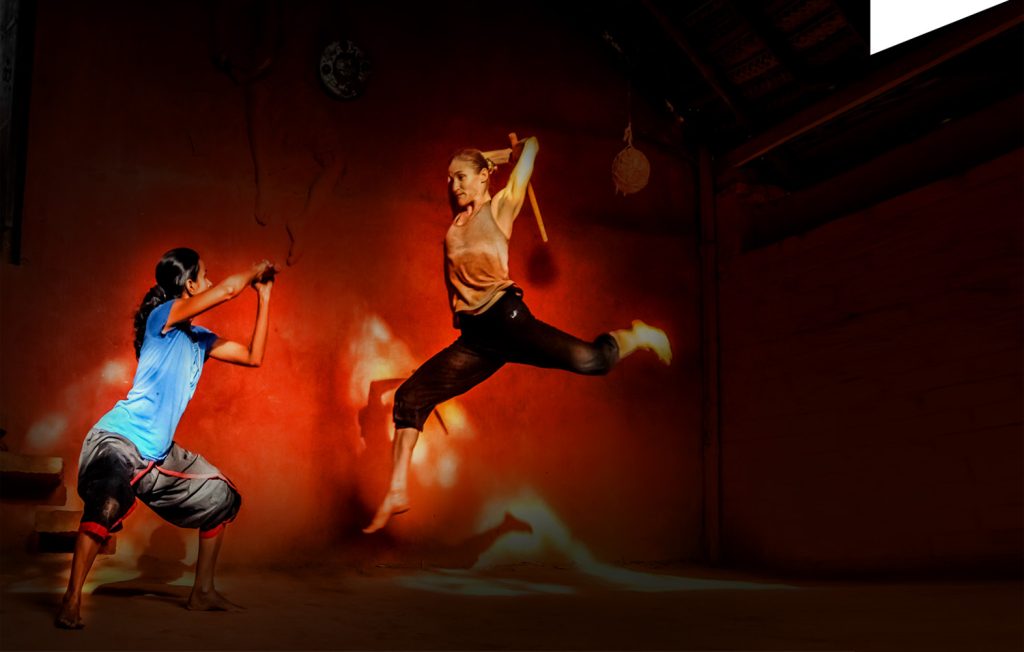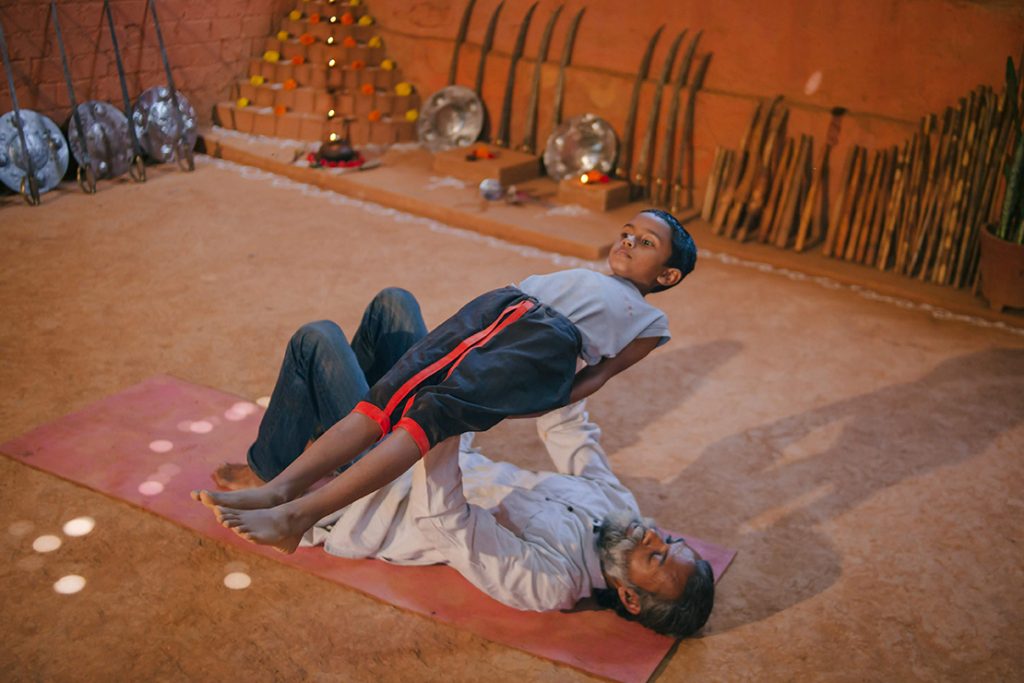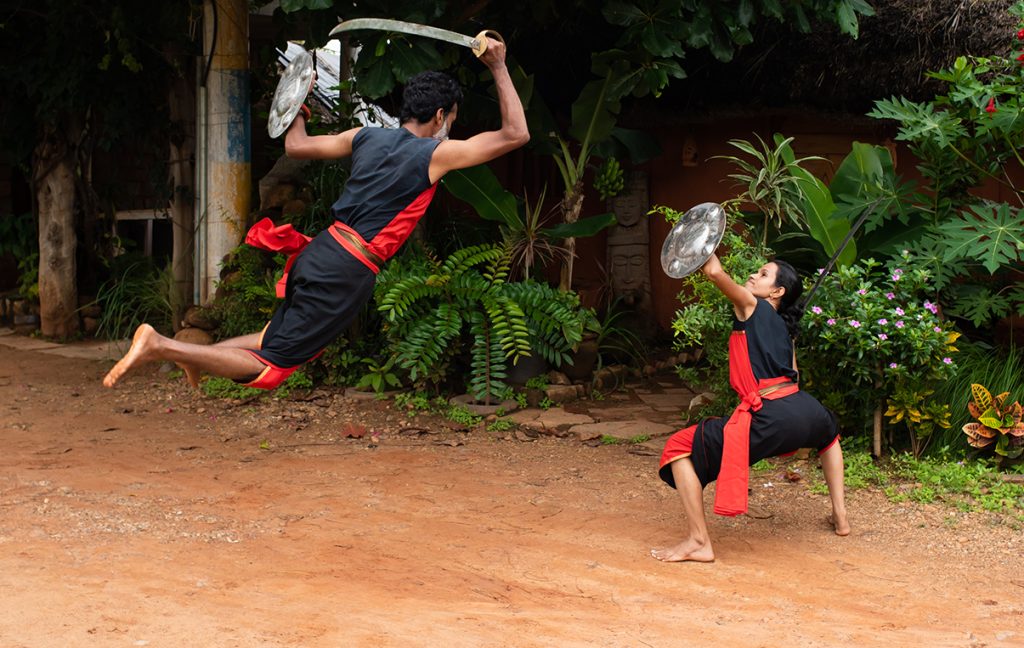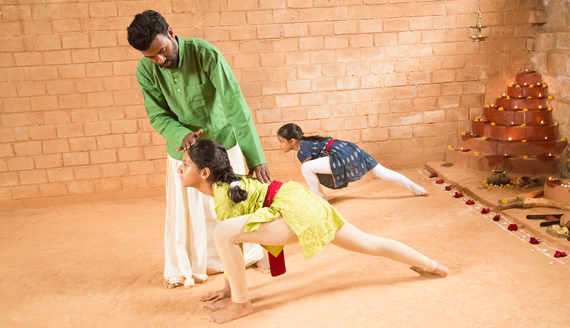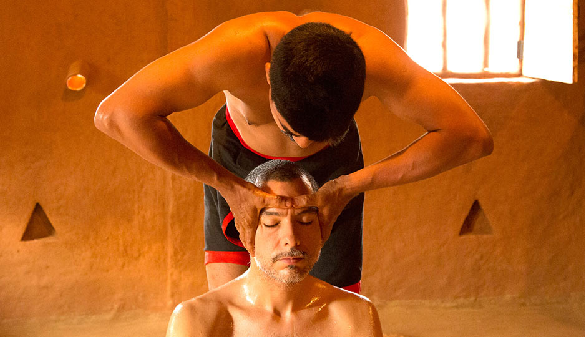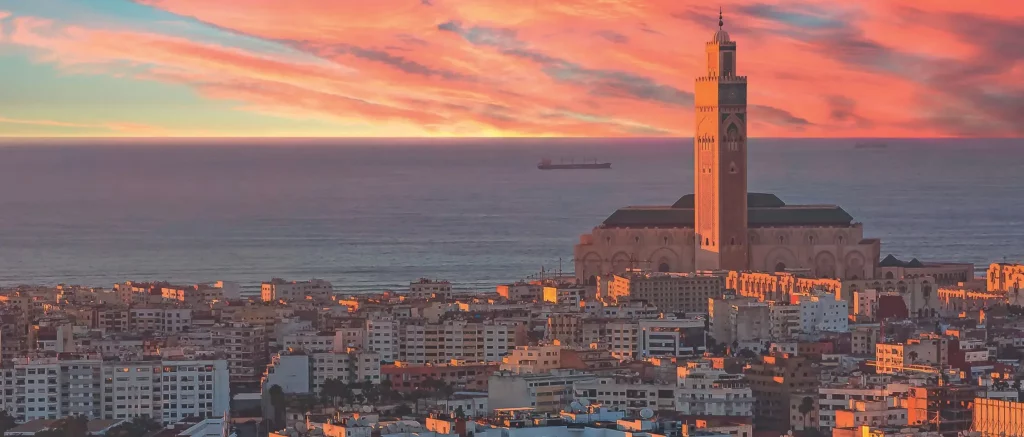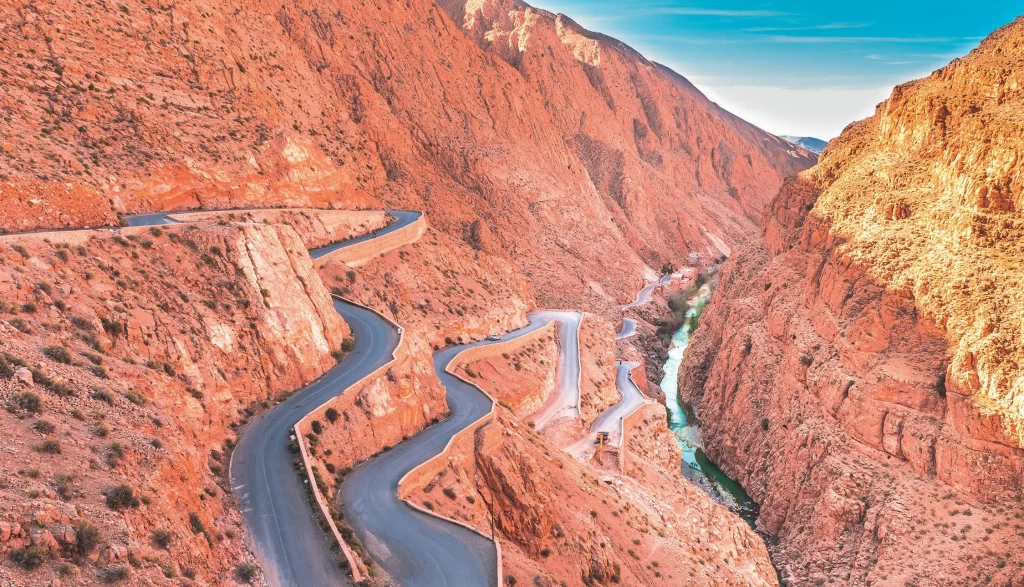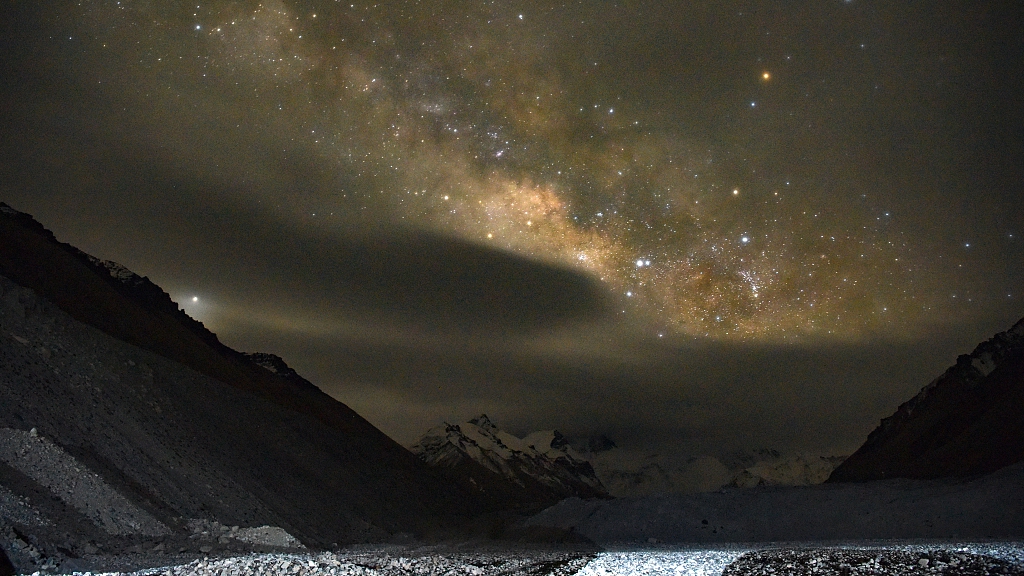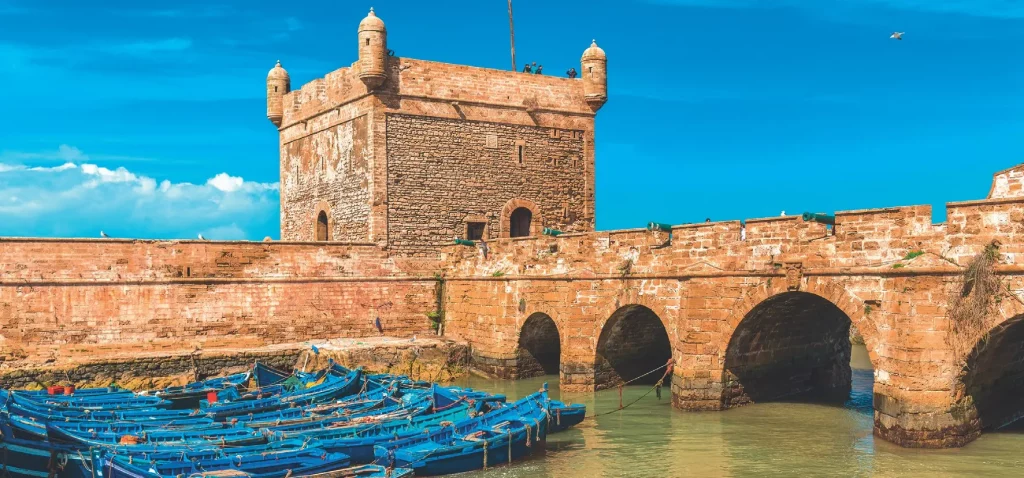“Imagine a car that goes through wear and tear as it runs. This is why we need to service it regularly – repair damages, oil/grease and fix issues. The human body is similar. It needs its downtime and regular maintenance for wear and tear. The trips to the service centre will be less if you maintain it properly”. Ranjan Gurukkal started talking about the importance of kalari chikitsa, comparing it to a car.
Kalari Academy of Performing Arts, Bangalore
Ranjan Mullarat Gurukkal is the founder of Kalari Academy of Performing Arts in Bangalore. He has been practicing and teaching Kalarippayattu for over 17 years now. But for Ranjan, Kalari isn’t just about fitness. It is as much a form of wellness as it is a martial art.
‘’Kalaripayattu is one of the most ancient forms of Indian martial arts that is still in existence. In fact, a lot of other forms like Kung Fu evolved from kalarippayattu. Bodhidharma, a monk, is believed to have carried this art to China, from which the other martial arts adapted it.
It is a powerful combat technique which has influences of yoga and Natya (dance). Chikitsa (treatment) based on marma (vital points) is also an integral part. It is said to have evolved from animal movements.” Kalaripayattu is adapted the world over as a dance form as well.
Ranjan Gurukkal and Kalari Chikitsa
Not only is Ranjan Gurukkal a Kalari practitioner, but he is an expert in Kalari treatment as well. Kalari chikitsa holds a great deal of importance in the training of the martial art as the students and teachers are prone to injuries. For a Kalari student to be trained as a master, they are required to undergo training in Ayurveda as well. Each Kalari master has different skills passed on through generations.
“Kalari chikitsa is fundamentally about identifying the vital points (marmam) under stress, repairing and rejuvenating it while eliminating any imbalance of the tridoshas – vata (wind), kabha (phlem) and pitta (fire). It is used to treat a wide range of ailments. Predominantly neuromuscular problems like arthritis (64 types), migraine (6 types), back pain, sciatica, hip pain, spondylosis, disc prolapse, joint problems affecting the knees, elbow and shoulders, bone fractures, etc.”
The Centre in Chikkagubbi
Ranjan also runs Kalari Gurukulam under the aegis of Kalari Academy of Performing Arts in Chikkagubbi village in the outskirts of Bangalore. The centre boasts of an authentic kalari pit dug into the ground 4 ft in depth, 42 ft in length and 21 ft in breadth, known as the kuzhikalari. It also houses a treatment centre within.
Next to Kalari Gurukulam is Aura Kalari, an eco-friendly stay comprising of mud huts and healthy vegetarian food that Ranjan manages with the owner, Rajeev Balakrishnan.
Moving towards wellness
A simple warm up before kalari is enough to stretch your muscles and activate every part of your body. But Ranjan stresses on the importance of taking care of one’s body on a regular basis.
“Pre-empting illness and maintaining overall wellness can be achieved by a combination of simple Kalari and yoga exercises. Also breathing drills, pathyam or a regulation of habits inclusive of diet and some basic oil massages and sufficient rest can help too. All put together could just take an hour of your time daily.”
But he also emphasizes that wellness is not a one-day flash sale. It takes time, effort and utmost discipline to treat your body like a temple and achieve holistic health. Which doesn’t happen in today’s world, owing to demanding jobs and schedules?
“If there is an ailment, we first diagnose the balance of the doshas and identify the damaged vital points and then treat them with a combination of Ayurvedic medication and massages or dharas and enough rest to first neutralize and then to regenerate and finally stabilize and strengthen. Here the pathyam and diet restrictions would be very strict as it is essential to quell the disparity.
When to do Kalari Chikitsa?
A typical cycle for this to happen is 41 days as that is how the body functions, though you will start seeing positive results in about 10 days. The issue is that most people will ease on the regimen the moment they start seeing changes and this is not advisable.”
How about an eco-friendly break at Aurakalari?
- The blooms adorn the greenery like jewels
- Buy yourself the gift of time and silence
- Soothe your soul with relaxing therapies
- Comfortable, exotic and pastoral
- Dine in an eco-friendly envrionment
- Inspire the hidden artist in you
So don’t wait for your body to break down before taking it to the workshop. Service it regularly and you’ll cruise along just fine!

